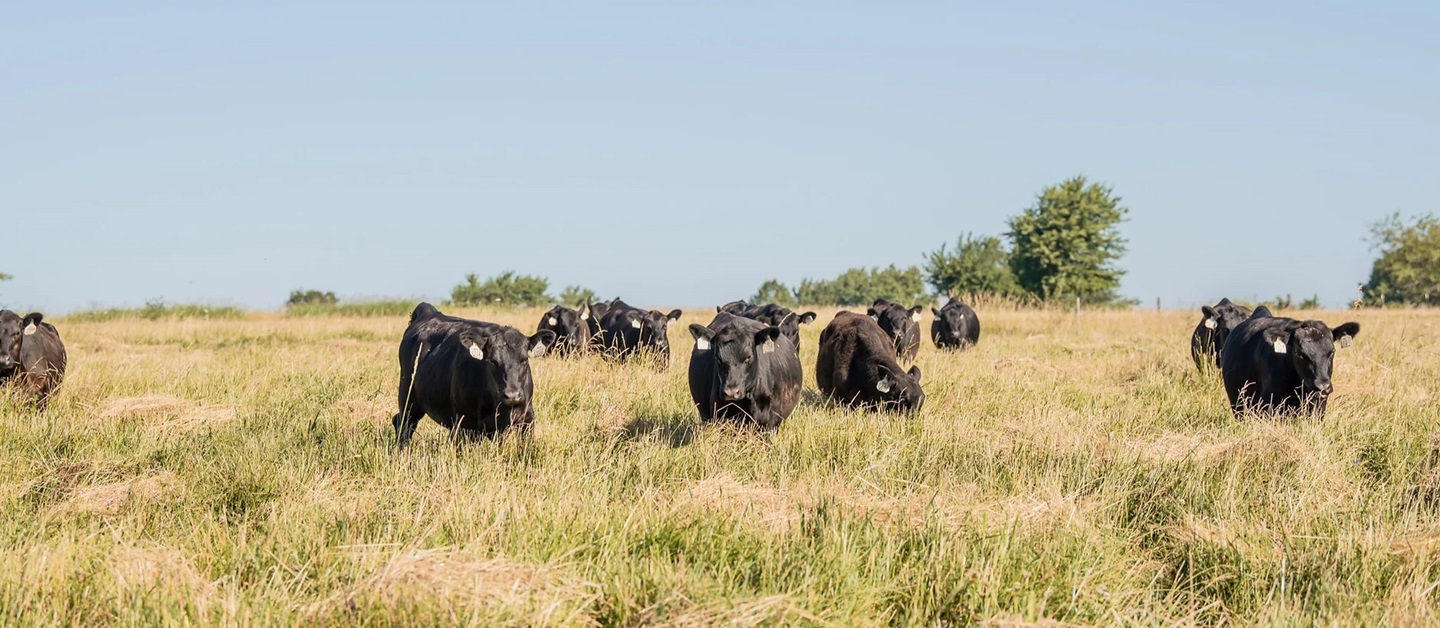True Stewards
Grazing management can play a role in an operation’s success.
August 1, 2023
There are nearly 654 billion acres of grazing lands in the United States, with 127 of those being used strictly for the production of livestock. Of the total acreage available, 70% is degraded in some form.
It’s a truth Hugh Aljoe, director of ranches, outreach and partnerships at Noble Research Institute, recited with certainty. The numbers weren’t meant to scare listeners who gathered at Cattlemen’s Conference in Stillwater, Okla., May 24-25, 2023, but they were intended to create a sense of urgency.
Aljoe knows cattle producers are familiar with the word “sustainability,” but he urges them to think outside the box when it comes to the hot topic. He labels sustainable practices as “regenerative ranching.”
“The thing we’ve got to be thinking about is what does the entire future look like?” he asked. “It’s not just about cattle. It’s also about profitability. It’s also about the land.”
Cattle producers should make rebuilding decisions today to ensure they can continue ranching, while making a profit, in the future.
For Jeff Goodwin, that means thinking about if pastures are coming back as strong as they were in past years. Is your cattle operation producing the same amount or more with less inputs than what was needed when you entered the industry?
“The truth is more important than the trend,” the director of the Center for Grazinglands and Ranch Management at Texas A&M said.
It’s a pretty word, but being sustainable is all about making sure that the beef industry is doing its part to keep the land healthy enough to continue supporting our herds, Goodwin explained.
Under the surface
Caring for the land actually starts where cattlemen can’t see: the soil.
“Soil is not just a medium to grow crops,” Goodwin said. “It’s actually a living ecosystem.”
Healthy soil depends on the organic matter available. When at least 2.5% of that is soil carbon, Goodwin said soil capacity can be increased.
While no one can change soil, all ranchers have the ability to control land cover. On grazing lands, producers have access to the world’s most natural solar panels. Grass soaks up sunlight to produce forage for cattle, so it’s vital to learn how to capitalize on a relationship with Mother Nature.
“We want energy flow,” Aljoe added.
Though he admits it might feel like a repeat of high school, Aljoe said taking care of the land really is as simple as ensuring there’s enough leaf area available at any time throughout the year to allow for photosynthesis.
Land stewardship also comes down to helping maintain the planet’s natural community dynamics. Cattle producers have to feed their livestock while ensuring there’s enough forage left for other organisms to survive and for the plants to repopulate.
Goodwin encouraged producers to leave some residual cover each year, change their grazing practices on an annual basis, periodically provide rest periods and consistently distribute livestock over the entire pasture.

Planning is key
“It’s more important to know how to apply principles and practices that improve soil health than just demonstrate knowledge of it,” Aljoe said.
Feedlot owners don’t put all the feed they plan to give a group of cattle in front of them at one time, so why would a producer put all the available grass in front of a herd at one time?
“We want to be intentional with what we do,” Aljoe added.
Grazing management starts with self-assessment. Goodwin said there are a few key questions an operation should consider:
- How often should the herd be grazing?
- What time of year should the herd be grazing?
- How long should the grazing period be?
- How much should the herd be allowed to graze?
There are no right or wrong answers, but the responses a producer comes up with will affect how they treat their cattle and their pastureland.
Creating a plan can help increase margin per acre by decreasing direct costs, Aljoe said. More importantly, however, it can help the beef industry tell our story to consumers.
Headlines are currently being published about ranchers’ livelihoods — headlines being written by individuals detached from agriculture. The public is hearing about the dangers of greenhouse gases, but Aljoe said they’re not being told that agriculture is only adding 11%, with just 3% of that coming directly from the beef sector.
Statistics catch attention, but there are figures that showcase how dedicated cattlemen are to their livestock and this planet.

Topics: Events , Feedstuffs , Pasture and Forage , Sustainability
Publication: Angus Journal


